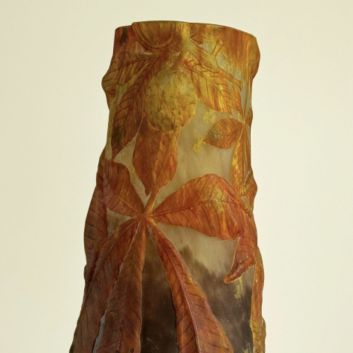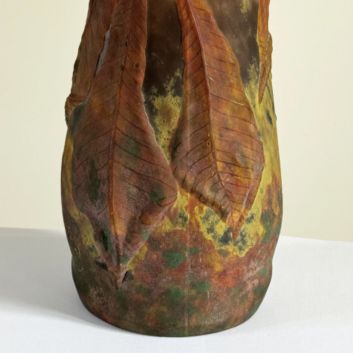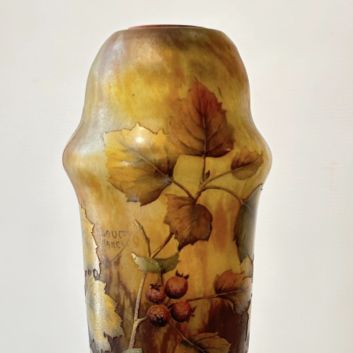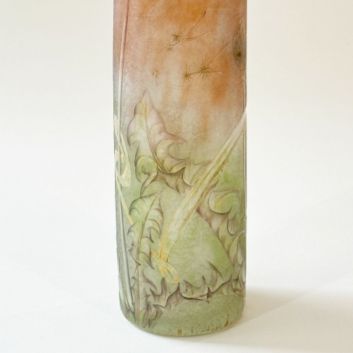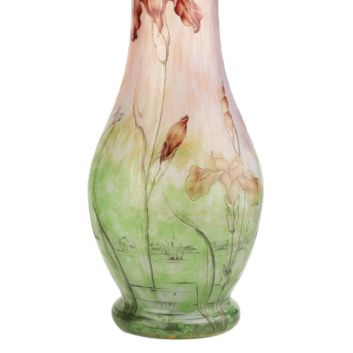Estimate, price of the works, pâte de verre vases, Daum vase
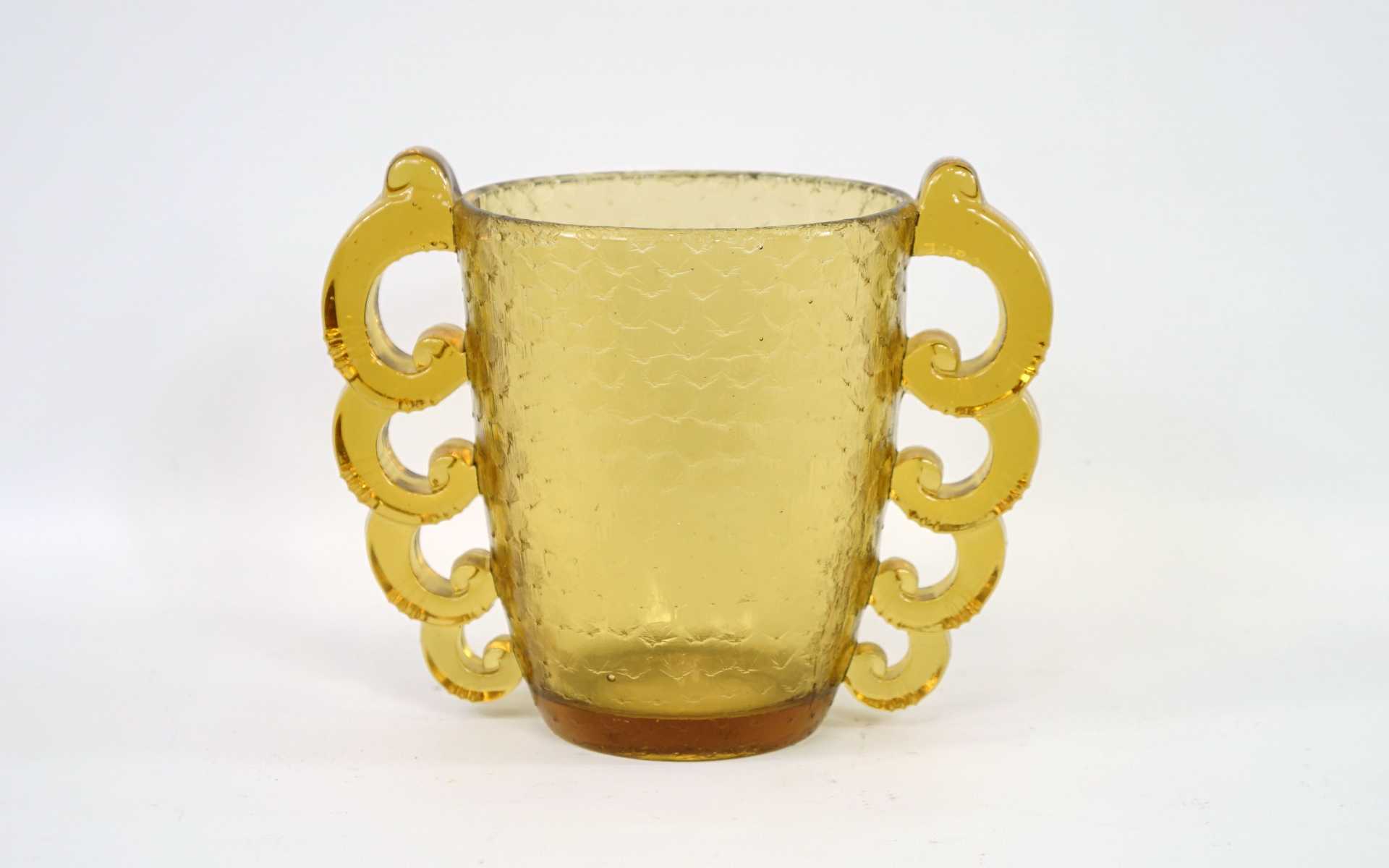
If you own a piece of pâte de verre by or after Daum, and would like to know its value, our state-approved experts and auctioneers will be happy to offer you their appraisal services.
Our specialists will carry out a free appraisal of your work, and provide you with a precise estimate of its current market value.
Then, if you want to sell your work, we'll point you in the right direction to get the best possible price for it.
Rating and value of Daum pâte de verre pieces
Daum is a French glassmaker well known to glass service enthusiasts. If you own one, it may be worth more than you think. On the art market, Daum pâte de verre works can fetch very high prices under the auctioneer's hammer.
His pâte de verre works are particularly sought-after, and the price at which they sell on the art market ranges from €60 to €800,800, a fairly substantial range, but one that speaks volumes about the value that can be attributed to Daum pâte de verre.
In 2019, an Art Deco glass paste vase sold for €12,000, while it was estimated at €2,000-3,000 by Sotheby's.
Order of value from a simple work to the most prestigious
Object type | Results |
|---|---|
Glassware service (all types) in glass paste | From €60 to €5,000 |
Sculpture in glass paste | From €90 to €11,500 |
Vases in glass paste | From €80 to €800,800 |
Response in less than 24h
The history of the Daum glassworks
Jean Daum (1825-1885), French glassmaker, gave his name to the world-renowned Daum company. A notary by profession in northern France, he moved to Nancy after the war with Prussia and opened a glassworks there in 1878.
The business soon became a family affair, with his son working alongside him from the very beginning. Auguste Daum took over management of the glassworks on his father's death, and was joined by his brother Antonin.
Closer to the artistic side of the manufacture, the latter signed several works, and pieces signed by Antonin Daum are more frequently found on the auction market: he heads Daum's artistic department.
Antonin Daum played a crucial role in the development of pâte de verre, a technique that quickly became emblematic of the manufacture. His interest in new methods enabled him to explore the infinite possibilities offered by this material.
He produced his first works using the technique of acid decoration, a process that consists of creating patterns by engraving with a corrosive acid.
At the same time, he developed a passion for multi-layered glass, which enables different shades and textures to be superimposed, enriching the chromatic palette of his creations.
It was also under his direction that wheel engraving, a delicate and precise technique, found its place in the creative process. To perfect his work, Antonin recruited Jacques Grüber, a talented artist in charge of creating the pieces.
Grüber, with his artistic vision, broadened the horizons of Daum glassmaking, contributing to the rise of pâte de verre as a true art form in its own right. Together, they took part in the Chicago World's Fair in 1893, where their expertise was showcased.
The factory then exhibited throughout France and received several awards for its work. At the 1900 Universal Exhibition, both Daum and Gallé glassworks receive awards for their work, marking the start of international recognition.
This success was reinforced by the arrival of artists such as Henri Bergé, Émile Writz and Amalric Walter, who successively joined the factory at short intervals.
Their presence contributes to the artistic development of the company, enabling Daum glass paste to establish itself as an essential reference in the field of artistic glass, combining innovative techniques and aesthetic sensitivity.
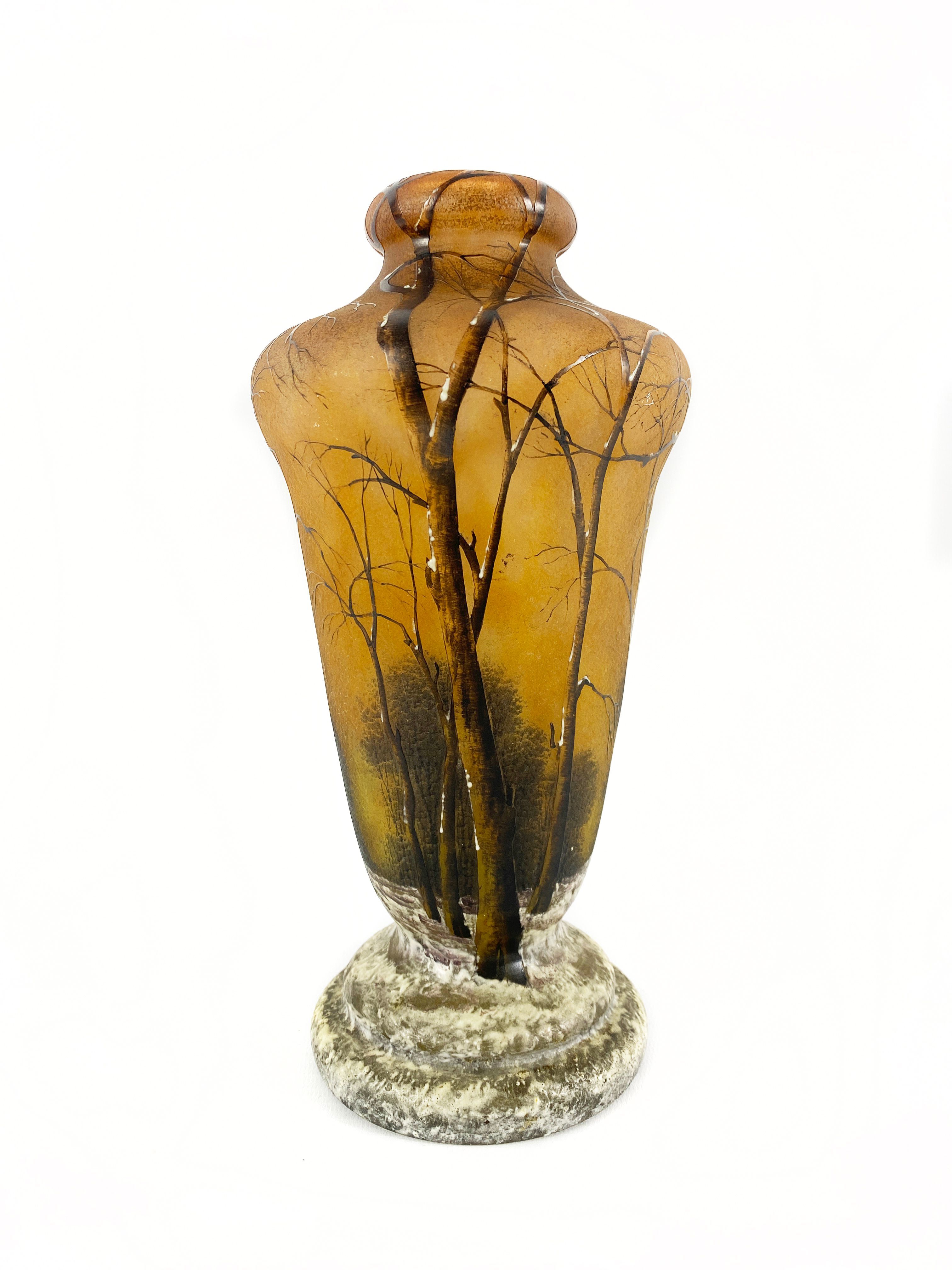
Focus on the cloisonné vase by Daum and Majorelle
Glass paste, an innovation at the Daum glassworks
Glass paste has been reinvented by Daum. Almaric Walter who took the initiative. The technique has existed since the time of the Egyptians, around 500,000 BC, but it's thanks to Walter's innovation that pâte de verre is enjoying a new lease of life.
This modern-day technique is based on a lost-wax casting process, enabling extremely precise mass production.
This process offers results identical to the original model, which is impossible to achieve with blown crystal, which is often subject to the imperfections of handwork.
Glass paste is a mixture of crystal and lead, giving it remarkable luminosity and depth of color.
The creative process begins with the creation of an initial model in terracotta, which is then covered with a flexible elastomer mold. This step is crucial, as it enables us to faithfully reproduce every detail of the original work. Wax is then applied to the mold and covered with plaster, forming a negative mold.
A 20-day curing period is required in an oven, a time that may seem long but is essential to bring the groisil out of the plaster and guarantee the solidity of the piece.
This meticulous process creates around 200 identical vases of the same quality, illustrating Daum's expertise and craftsmanship.
Thanks to this technique, pâte de verre has become not only a symbol of innovation, but a true art form in its own right, celebrated for its beauty and originality.
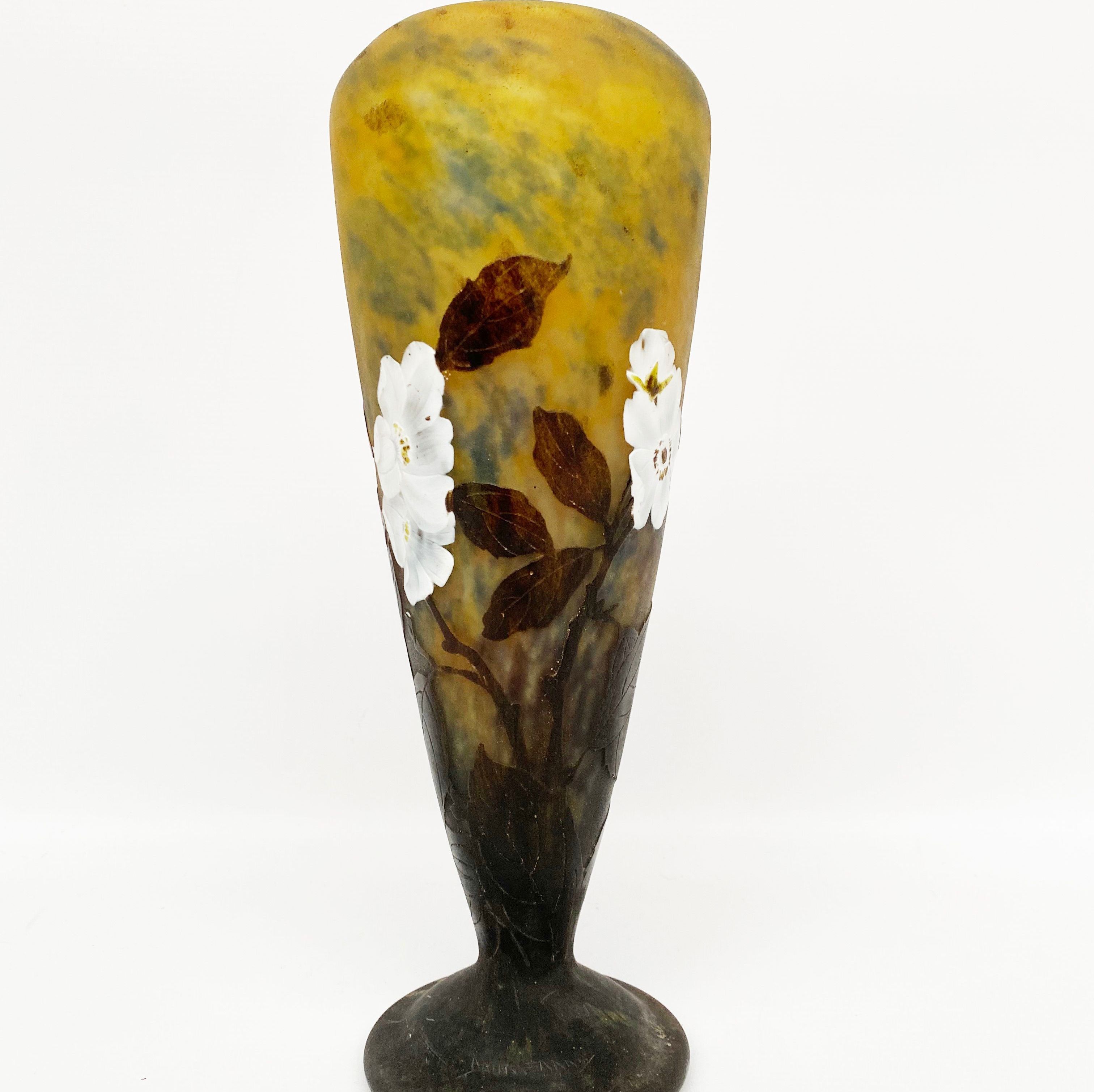
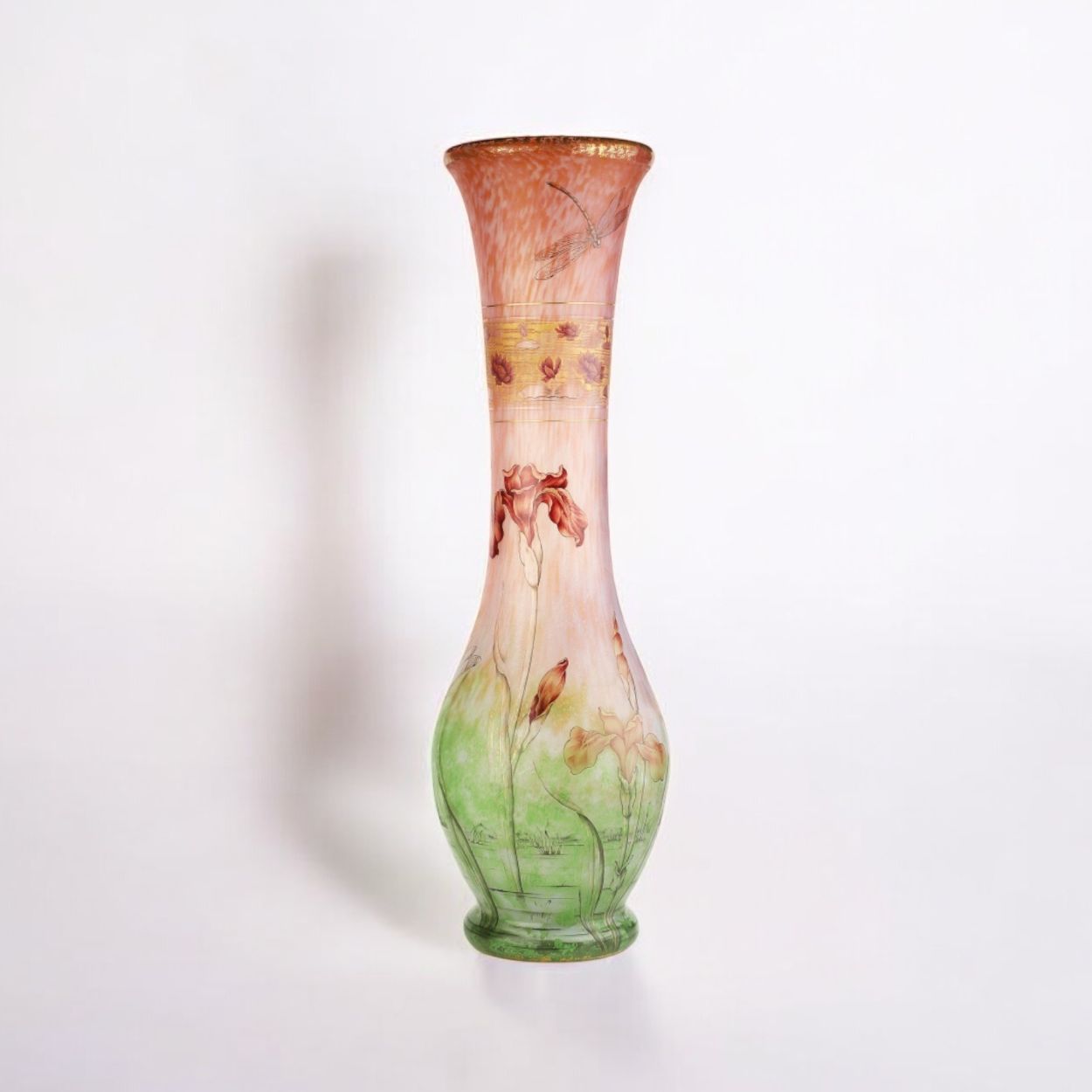
Focus on a Daum vase with iris design
This vase by Daum embodies the finesse and elegance of Art Nouveau, with a touch of plant poetry. The choice of a delicate floral motif, in this case irises, is typical of the naturalist inspiration behind Daum's creations.
This pattern runs smoothly along the vase's slender silhouette, subtly shifting from a soft green background to salmon pink, creating a gradient effect reminiscent of sunrise over a garden in bloom.
The color transitions bear witness to exceptional technical mastery, where each layer of glass seems to melt into the next, giving the whole a dreamlike quality.
Fine engraving and acid staining bring out the delicate details of the petals and stems, while the slender, slightly flared neckline gives the piece a refined, slender look.
A dragonfly delicately engraved on the top of the vase completes this bucolic atmosphere, adding an element of life to this plant scene.
This type of piece demonstrates the Daum brothers' talent for combining technique and artistic inspiration, transforming natural elements into decorative objects of rare beauty.
With this vase, Daum pays homage to nature, sublimating materials and infusing their glass with an almost living breath, capturing light and diffusing it into a soft glow.
Recognizing the signature on a Daum product
Not all Daum glassware is signed. What's more, as several artists have worked and sometimes collaborated for the factory, the vase may be signed with another name even though it was produced by the Daum glassworks. That's why it's important to have your pieces appraised.
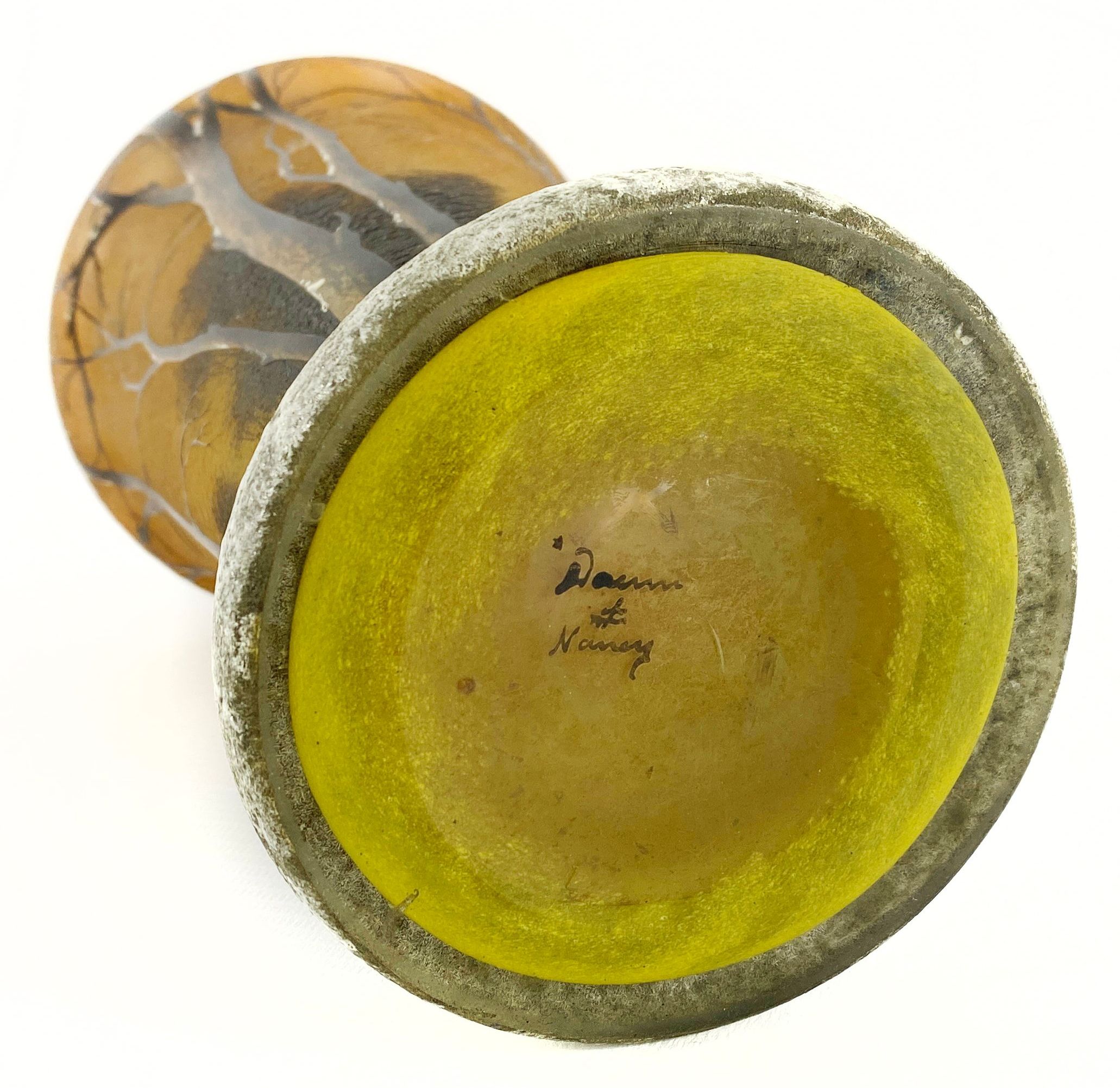
Knowing the value of a work
If you happen to own a Daum piece or one after the artist, please feel free to request a free appraisal using the form on our website.
A member of our team of experts and certified auctioneers will contact you promptly to provide you with an estimate of the market value of your work, as well as any relevant information about it.
If you're thinking of selling your work of art, our specialists will also be on hand to help you find alternatives for selling it at the best possible price, taking market trends into account.
Response in less than 24h
Related topics
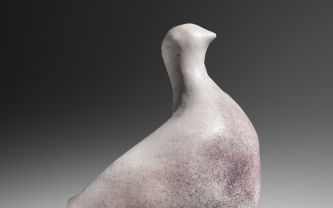
The price of the paintings and ceramics of Guidette Carbonel...
Guidette Carbonell, the power of color in contemporary painting and ceramics
Read more >

Rating and value of works, drawings, paintings by Raphaël De...
Raphaël Delorme is an Art Deco painter who produced paintings and drawings sought after at auction. Estimated in 24h.
Read more >

Rating and value of furniture, armchairs, tables by Eileen Gray
Eileen Gray is a 20th-century English designer and architect who produced furniture that is highly regarded and valued at auction.
Read more >
Secure site, anonymity preserved
State-approved auctioneer and expert
Free, certified estimates
